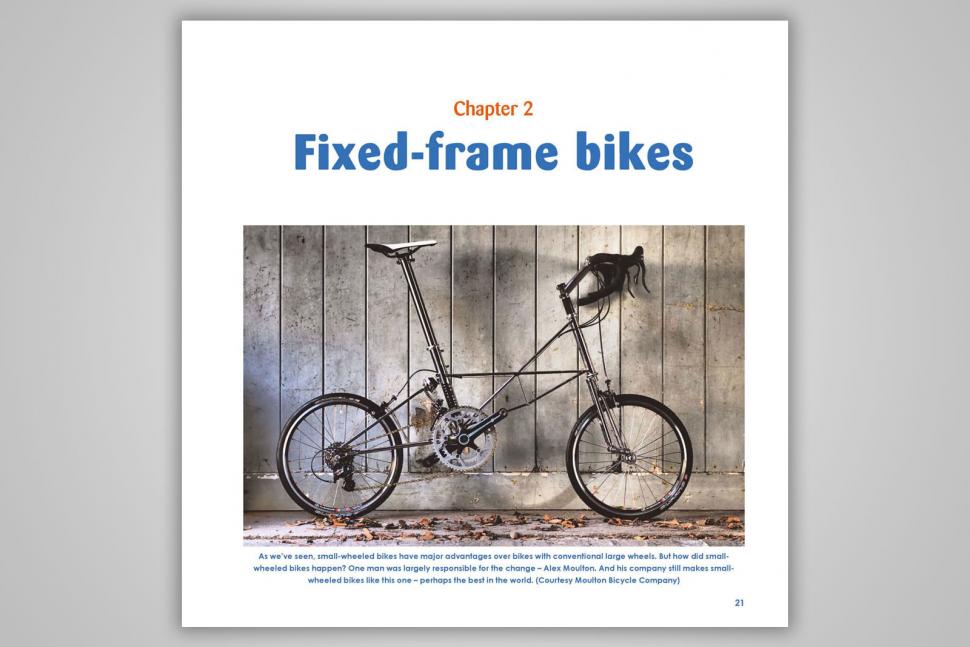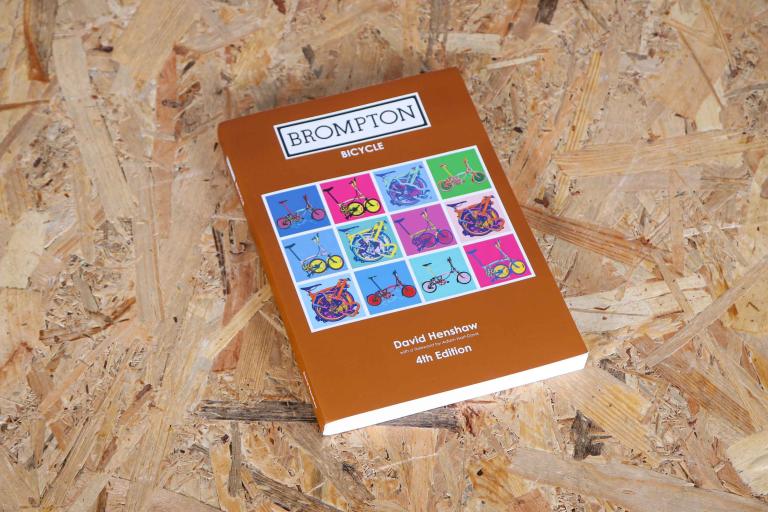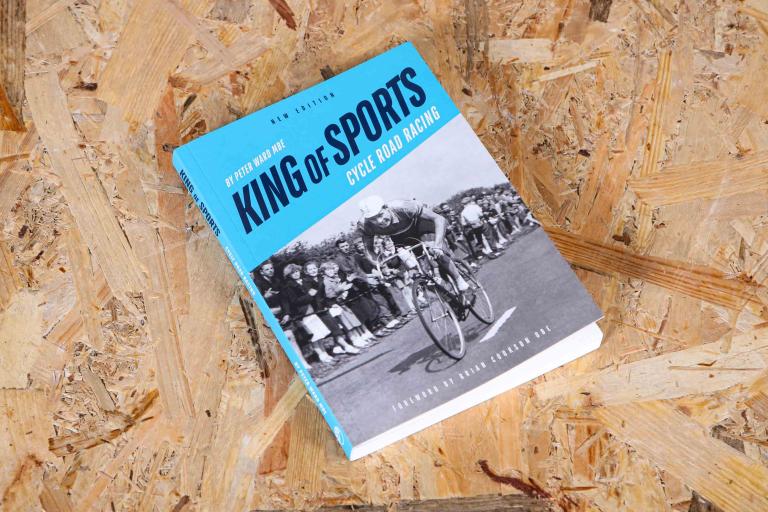- News
- Reviews
- Bikes
- Accessories
- Accessories - misc
- Computer mounts
- Bags
- Bar ends
- Bike bags & cases
- Bottle cages
- Bottles
- Cameras
- Car racks
- Child seats
- Computers
- Glasses
- GPS units
- Helmets
- Lights - front
- Lights - rear
- Lights - sets
- Locks
- Mirrors
- Mudguards
- Racks
- Pumps & CO2 inflators
- Puncture kits
- Reflectives
- Smart watches
- Stands and racks
- Trailers
- Clothing
- Components
- Bar tape & grips
- Bottom brackets
- Brake & gear cables
- Brake & STI levers
- Brake pads & spares
- Brakes
- Cassettes & freewheels
- Chains
- Chainsets & chainrings
- Derailleurs - front
- Derailleurs - rear
- Forks
- Gear levers & shifters
- Groupsets
- Handlebars & extensions
- Headsets
- Hubs
- Inner tubes
- Pedals
- Quick releases & skewers
- Saddles
- Seatposts
- Stems
- Wheels
- Tyres
- Health, fitness and nutrition
- Tools and workshop
- Miscellaneous
- Cross country mountain bikes
- Tubeless valves
- Buyers Guides
- Features
- Forum
- Recommends
- Podcast
review
 2022 Small-wheeled pedal machines – a better way of cycling - 1 - cover.jpg
2022 Small-wheeled pedal machines – a better way of cycling - 1 - cover.jpg£14.99
VERDICT:
One man's crusade to extol the virtues of smaller wheels, with lots of niche machines to enjoy
Welcome coverage to niche machines
Infectious enthusiasm
A little too much generic cycling advice
You could say he's unrealistically evangelical...
Weight:
670g
Contact:
At road.cc every product is thoroughly tested for as long as it takes to get a proper insight into how well it works. Our reviewers are experienced cyclists that we trust to be objective. While we strive to ensure that opinions expressed are backed up by facts, reviews are by their nature an informed opinion, not a definitive verdict. We don't intentionally try to break anything (except locks) but we do try to look for weak points in any design. The overall score is not just an average of the other scores: it reflects both a product's function and value – with value determined by how a product compares with items of similar spec, quality, and price.
What the road.cc scores meanGood scores are more common than bad, because fortunately good products are more common than bad.
- Exceptional
- Excellent
- Very Good
- Good
- Quite good
- Average
- Not so good
- Poor
- Bad
- Appalling
The market for 'small-wheeled pedal machines' is relatively small, with such bikes normally serving a specialist market that is not always well covered by the mainstream cycle press. This book of the same name is one of the few dedicated to such machines. Author Julian Edgar is undoubtedly enthusiastic about smaller wheels, and gives a very readable and personal view of them. He is not claiming this to be the definitive guide, nor is he unbiased, but it is an entertaining insight.
Edgar is passionate about pedal-powered machines with smaller-than-usual wheels, confident that 'in many situations [they are] much more practical than conventional large-wheeled bikes'. Feeling that 'many people are completely unaware of the advantages of small-wheeled bikes', he is on a mission to spread the message with his book – or, if you are already a convert, it's 'a celebration of what we both know'.
I would temper his enthusiasm a little, in that small wheels have different strengths and weaknesses to larger wheels, making them more suitable in some conditions but less so in others. Being usable in certain conditions is not the same as being optimised for them all.
If a compact folded machine is your priority, then having a small wheel is a big advantage; however, even Edgar accepts that the rougher the terrain, the less suitable a small wheel will be – which is why mountain bike wheels have generally been getting larger – and I doubt that even Edgar will manage to reverse that trend.
So what arguments does Edgar have to convince us that he is right? Saying that smaller wheels provide more space above the wheels for luggage, make it easier to incorporate suspension, take up less space, and are lighter, is all true, but those are not the only considerations in deciding what's best in any situation.
Further claims that the smaller diameter puts less strain on a hub might be true, but that's getting pretty tenuous – and the fact that inner tubes are smaller to carry as spares is again accurate, but is unlikely to swing the argument for most people. Also, while they might catch less wind, the frontal area of the complete bike and the human-shaped object above the wheel doesn't really change – and the latter still accounts for the majority of air resistance anyway.
Edgar does accept that there are disadvantages to smaller wheels: the lighter weight reduces the gyroscopic effect; the reduced diameter makes rim brakes less effective; and tyres will sink into soft surfaces a bit more. They also position the hubs closer to the ground and more prone to contamination.
I wouldn't disagree with any of Edgar's arguments in principle, I just think that generally there are many other factors that go into choosing a suitable machine beyond wheel size.
He does give a very good potted history of small-wheeled and folding bikes, and it brought back many memories of early Moultons, original Bickertons, and of course the ubiquitous Brompton.
I also enjoyed a chapter about the restoration of bikes, including his own Series 1 Moulton. It's informative, well illustrated, and reinforces the point that while such projects can be rewarding, they don't always make economic sense.
> 42 of the best cycling books — check out the books every cyclist should own
Quite a few pages are taken up with general information that applies equally to all bikes, and that you can easily find in other places. I would rather have more pages about the specifics of small-wheeled machines that you typically won't find elsewhere. for example, within the three pages given over to a suggested packing list for touring, there is absolutely nothing that is unique to small-wheel machines. It's just that you have shorter spokes.
Other points may be more size-specific, but are stating the bleeding obvious: if you want to take the bike in your boat or car, he asks, 'Can the folded bike actually fit into the space you have available?'
Edgar doesn't go into much detail of specific bikes and models, which means the book won't date so readily. Similarly, even with some of the brands that are mentioned, availability will vary between countries as distribution arrangements change, so don't expect everything that is mentioned to be readily available where you are – Dahon is easy for us, Bike Friday less so, and no chance for Fortis (by Kogan) in this hemisphere.
Recumbent trikes feature throughout. They don't receive much coverage in other books, despite them being 'the most comfortable and stable pedal machines in the world', allegedly. The Australian brand Greenspeed is his favourite, perhaps because that is where Edgar lives.
His location also gives him more opportunity to use pictures of the bikes being ridden on 'our' side of the road, although most of the images are of bikes anywhere but on the road.
Overall, this is a welcome insight into lesser-known areas of the market, but although Edgar does a good job of explaining where smaller wheels can be beneficial, his obvious bias sometimes clouds his judgement as to what is best.
Verdict
One man's crusade to extol the virtues of smaller wheels, with lots of niche machines to enjoy
road.cc test report
Make and model: Small-wheeled pedal machines – a better way of cycling
Size tested: 96 pages
Tell us what the product is for and who it's aimed at. What do the manufacturers say about it? How does that compare to your own feelings about it?
From the publisher:
Small-wheeled pedal cycles are fun, nippy and portable. They're ideal for commuting or taking on holiday. If you're a small-wheeled bike enthusiast, a traditional bike owner who wants to explore other options, or just someone interested in green transport, this book is for you!
This book explores the many advantages of small-wheeled pedal machines – convenience, portability, comfort and speed.
A small-wheeled bike is ideal for your daily commute, or for taking on holiday. Bikes with small wheels can be folded into tiny packages, and using small wheels allows the production of innovative machines like recumbent trikes – the most comfortable and stable pedal machines in the world. And small-wheeled bikes can be fast – the world speed record for a bike is held by a small-wheeled machine.
Major brands are covered, including the Brompton – the best folding bike in the world, the Birdy – a folding bike that uses front and rear suspension, and the Moulton – the world's first successful small-wheeled bike. Want to tour the world with a bike you can fit into a suitcase? Then a Bike Friday is for you. Commuting, touring and restoration – it's all here. Discover a whole new world of cycling!
Written by prolific author, Julian Edgar, who is a lifelong cycling enthusiast, and has owned, designed and built his own small-wheeled bicycles.
* Going small-wheeled – the advantages
* Fold your bike and take it with you – everywhere!
* Commuting for convenience, fitness and speed
* The engineering and design of cutting-edge cycles
* Store your bike under your desk
* Recumbent trikes for stability and comfort
* Bikes that fit into suitcases – travel the world
* Rebuilding and restoration
* Brompton, Birdy, Moulton, Greenspeed and more!
* A complete guide to the world of small-wheeled pedal machines
Tell us some more about the technical aspects of the product?
Title: Small-wheeled pedal machines
Author: Julian Edgar
Publisher: Earthworld
Date: June 2019
Format: Hardback
Pages: 96
ISBN: 9781787114012
Price: £14.99
Tell us what you particularly liked about the product
Enthusiasm for the cause.
Tell us what you particularly disliked about the product
The inclusion of generic advice that is not specific to smaller-wheeled machines.
Did you enjoy using the product? Yes
Would you consider buying the product? Yes – at the significant discounts available.
Would you recommend the product to a friend? Selectively
Use this box to explain your overall score
Edgar does a good job of explaining where smaller wheels can be beneficial, although his obvious bias sometimes clouds his judgement as to what is best – but this is still a welcome insight into lesser-known areas of the market.
About the tester
Age: 60
I usually ride: My best bike is:
I've been riding for: Over 20 years I ride: Most days I would class myself as: Expert
I regularly do the following types of riding: touring, club rides, sportives, general fitness riding,
Latest Comments
- mctrials23 6 min 44 sec ago
This is exactly the sort of thing AI enables them to do. Previously it was thought impossible to do something like "if user is travelling for 3...
- chrisonabike 25 min 24 sec ago
It's not just cyclists... here's a BBC article with a wildlife trust reminding people to keep their dogs under control where asked to in the...
- archieboy 29 min 26 sec ago
No, just to expensive, I went Jonas and Demi as the expensive picks....
- Oldfatgit 6 hours 15 min ago
[Snip]...
- chrisonabike 7 hours 34 min ago
Well, Edinburgh certainly has hills, there's quite a bit of pavé and Arthur's seat is regularly motor-traffic-free anyway, so that would work. ...
- AJ101 8 hours 10 min ago
It was never the same after David Duffield left. With no more "Turn your granny to the wall" it felt too professional. And in the era of big...
- chrisonabike 9 hours 52 min ago
I think there could be a whole other thread there... per your post on the funnies of the US vs. Switzerland. (Or possibly a report to government...
- LookAhead 10 hours 44 min ago
Now where's the fun in being logical?...
- Sredlums 23 hours 13 min ago
I don't know how I can make it any more clear, so I will just repeat myself: "'I was not saying counterbalance isn't a thing"....
- chrisonabike 1 day 5 hours ago
Ah, but they're used by crims! Feckless yoof probably dealing / stealing when they're not wheelying down the roads or pavements (is it them that...












Add new comment
1 comments
Julian Edgar is an extremely prolific writer. Surprisingly he is something of a petrolhead too, having authored car tuning guides, although I understand he has become more of a writing coach of late. I especially like his articles popularising landmarks of engineering.